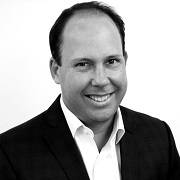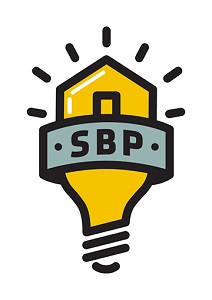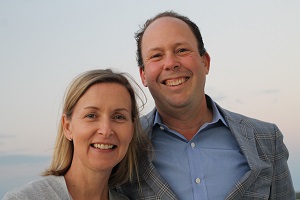 Special to the Philanthropy Journal
Special to the Philanthropy Journal
By Zack Rosenberg, Co-Founder & CEO, SBP
Why do organizations exist? Naturally, organizations exist to solve a need. That’s probably close to the rhetoric used by business schools to describe the purpose of any nongovernmental entity. There is a tendency to sensationalize these stories. As a society, we love to scroll through our news feed and come across that Cinderella story about a visionary individual who recognized an opportunity that had yet to be conceptualized or capitalized upon and see how they leveraged it to create something tangible out of thin air. Sometimes people think that was how SBP’s story read—but it’s not.
 When I think back to the devastation following Hurricane Katrina, I’m hard pressed to define those moments as any kind of opportunity to be seized. It was 2005. My then girlfriend, now wife Liz and I were living in Washington D.C., far removed from the demoralizing images of families and communities who had lost everything. I remember that feeling; we’ve all felt it before—shock, emptiness and the eventual gaping hole torn in the human spirit. We felt compelled to do something.
When I think back to the devastation following Hurricane Katrina, I’m hard pressed to define those moments as any kind of opportunity to be seized. It was 2005. My then girlfriend, now wife Liz and I were living in Washington D.C., far removed from the demoralizing images of families and communities who had lost everything. I remember that feeling; we’ve all felt it before—shock, emptiness and the eventual gaping hole torn in the human spirit. We felt compelled to do something.
People say that tragedy is defining moment, and defining moments have the capacity to force us down a path. Watching the devastation of Katrina certainly put Liz and me on a path. We made a plan to go to New Orleans for 2 weeks to help with the recovery process. We never thought in a million years we would move to New Orleans and start a non-profit organization.
The Post-Disaster Reality
 We arrived six months after Katrina, in February 2016. Rebuilding work had not started. People were living in attics, garages and cars. A “lucky” few were living in FEMA trailers—30-feet long, 10-feet wide—packed in with up to eight people. These were people who had achieved the American Dream—homeowners now living in ruin.
We arrived six months after Katrina, in February 2016. Rebuilding work had not started. People were living in attics, garages and cars. A “lucky” few were living in FEMA trailers—30-feet long, 10-feet wide—packed in with up to eight people. These were people who had achieved the American Dream—homeowners now living in ruin.
Since rebuilding work had yet to start, we joined up with the only organization that responded to our email, members of the Rainbow family who were making meals that fed 1,200 people each day, and serving the meals in a geodescent dome. We slept in tents in the back of an Off-Track Betting building, cooked food, and spent time with the residents who reminded us of our family. We got to know the people; they were kind, hardworking and despite the loss and devastation, wanted to return to their homes and again live near their family members.
I share that story to help illustrate that SBP was born as a reaction-based organization—helping homeowners rebuild after disaster. As SBP grew, we began to understand that our clients didn’t just want someone to rebuild their homes, they wanted someone to prevent this from happening to them again. To survive a disaster means you have suffered. There is tremendous risk for people to reach their breaking points in the months following disaster. While every person is different, SBP has seen through our national work that factors leading up to the breaking point include a lack of predictability, time and resilience.
Lack of predictability stems from people not having a clear path forward. They don’t know if or when they will be able to return home. Then factor in time. The more time recovery takes the greater the chance of reaching their breaking point. Lastly, you factor in resilience. Resilience is not just internal resilience, but the ability to build resources and protection before disaster and navigate systems and access resources after disaster. Together these factors lead to an intolerable condition. The point where all hope is gone. A point people can’t come back from. We needed to find a way to prevent this intolerable condition.
Changing Our Approach
No longer satisfied with merely reacting and building houses, we understood that to shrink the time between disaster and recovery, we needed to employ a host of interventions: upstream interventions, capacity building interventions, and scaled harm-preventing interventions. As such, after disaster SBP identified and implemented five critical interventions.
First, we rebuild homes quickly after disasters. With help from Toyota and the Toyota Production System, we’ve streamlined our construction process and can rebuild more homes than any other rebuilding organization in each community in which we operate.
Second, we share SBP’s rebuilding innovations with other organizations, increasing efficiency across the disaster rebuilding sector. Our open source model allows us to increase capacity and scale quickly to help more people.
Next, we prepare home and business owners in resilience and risk mitigation prior to disaster. We offer a host of resources and trainings both in-person and online to help drive people to take preemptive measures to physically reinforce structures, getting the right insurance and store important documents properly to minimize the needs of an impacted community for future disasters.
We also advise policy makers immediately after disaster so they can deploy federal dollars sooner, and in a way that empower an efficient recovery. SBP is currently working with the city of Houston in this capacity and will soon roll out a Mayor’s Playbook to outline these hard-learned best practices we’ve encountered from previous disasters.
Lastly, we advocate for the reform of disaster recovery on a national scale. We’re pushing to expedite the FEMA application and approval process and deploy funding to disaster impacted areas quicker. SBP has also implemented systemic-level programs such as the pilot program in Louisiana which enabled HUD funds to reach disaster-impacted homeowners in seven months.
We’re using these five interventions to systematically address the more prevalent issue—that we have to get better at disasters. From a position of resilience, resource allocation and rebuilding, we need to actively work towards that goal of shrinking time between disaster and recovery to prevent unnecessary suffering. We didn’t arrive at this solution overnight, but through long years of boots on the ground working with impacted families and finding the bottlenecks and barriers in their recovery process and actively working to remove them. To date, SBP has brought more than 1,470 families home, however, our impact reaches beyond what can be measured qualitatively and witnessed at a homecoming party.
Our story is one of rolling up your sleeves, getting to work and learning lessons along the way. We wouldn’t be positioned to help in our current capacity if we didn’t start somewhere. That’s the solution we’ve arrived at. That’s why we exist.
Zack co-founded SBP in 2006 after spending two weeks volunteering in New Orleans six months after Hurricane Katrina. Following disaster Zack plays a direct role in the advisement of local and state government officials, and has worked closely with elected officials from South Carolina, New York and West Virginia, as well as with appointed officials at HUD, helping them to craft effective long-term recovery programs. Among the innovative SBP programs that Zack has designed include: Opportunity Housing, an innovative blight eradicating/affordable housing program that turns blighted properties into well-built affordable housing; and Disaster Resilience and Recovery Lab, which among other things, shares SBP’s learnings and model with at-risk and disaster impacted communities. Before founding SBP, Zack was an E. Barrett Prettyman Teaching Fellow at the Georgetown University Law Center and he ran an indigent criminal defense practice in Washington, DC. One of Zack’s most meaningful victories was freeing a man who served 23 years for a murder that he did not commit.




